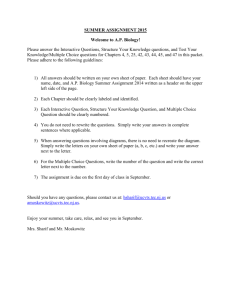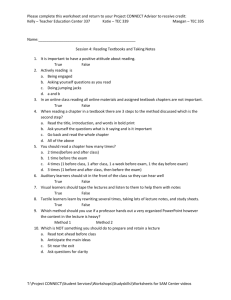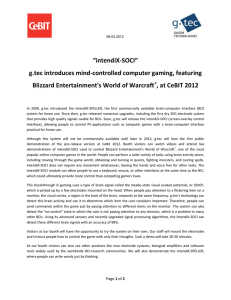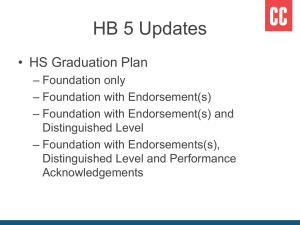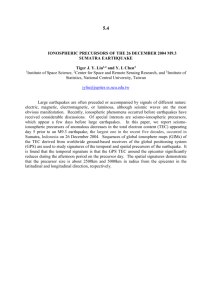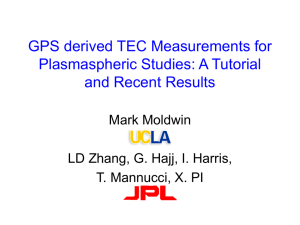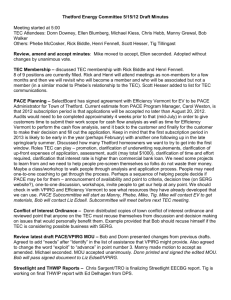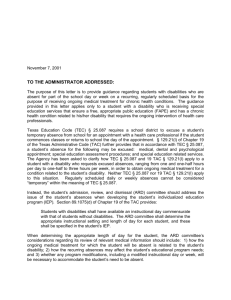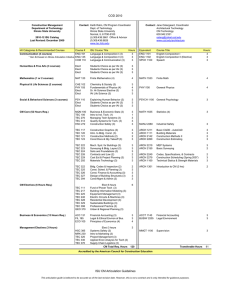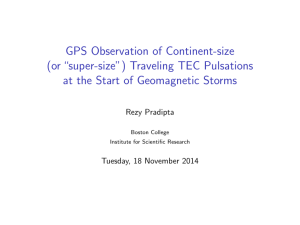Incubator Powerpoint Presentation
advertisement
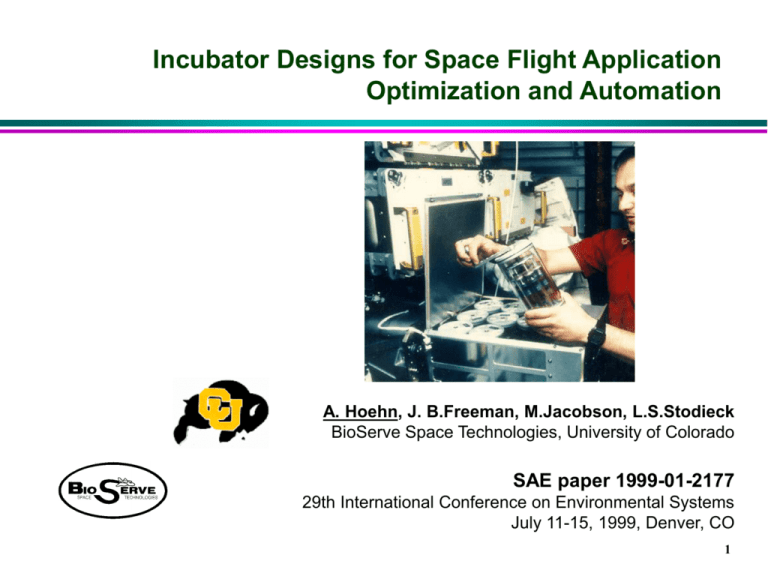
Incubator Designs for Space Flight Application Optimization and Automation A. Hoehn, J. B.Freeman, M.Jacobson, L.S.Stodieck BioServe Space Technologies, University of Colorado SAE paper 1999-01-2177 29th International Conference on Environmental Systems July 11-15, 1999, Denver, CO 1 Space Shuttle Experiment Accommodation 2 Experiment Accommodation environmental control / experiment execution FP A GE -FP A A uto-G A P IC V M -F PA G B A _IC M BPC S GEFA Isolate Gravity as sole independent variable: uniform ground vs.. flight environment / centrifuge ? temperature most influential, but: launch / landing, moisture, atmosphere 3 Typical Thermoelectric Heat Pump Assembly Temperature-Controlled Device •water-, air-heat exchanger, device Thermoelectric Heat Pump Air Heat Exchanger Forced Convection Cooling 4 Required Heat Pump Capacity Required Heat Pump Capacity For 4 Different Ambient Temperature Levels 50 20°C T amb 12 mm foam insulation 25°C T amb Heat Pump Capacity [W] 40 30°C T amb 35°C T amb 30 20 10 0 -10 -20 0 5 10 15 20 25 30 35 40 Incubator Temperature [°C] 5 Heat Pump Optimization TEC TEC TEC TEC TEC TEC TEC TEC TEC Electric Configuration Effects for 5 different TEC Modules 100.00 80.00 Type A 60.00 Type B Type C 40.00 c Type D 20.00 Type E 4S x2 P 6S 5S 2S x2 P 4S 3S 0.00 2S Electric Pow er [W] per 40 Watt Heat Pum p Capacity V+ Configuration (serial, parallel) 6 Forced Convective Cooling ? •Densely packed •Larger temperature gradients due to heat transport Option: •Water-cooled walls •External Insulation •High thermal Conductivity 7 PGBA Thermal Management Subsystem Solid state Peltier devices used to “pump” heat from liquid loops to air heat exchanger 8 Temperature Gradients - Heat Transport Heat Transport in Water Difference between entrance and exit coolant temperature 6 100 ml/min Delta Temperature (Entrance - Exit) [°C] 200 ml/min 5 300 ml/min 400 ml/min 4 30°C ambient temperature 12 mm foam insulation 3 2 1 0 0 10 20 30 40 Incubator Temperature [°C] 9 Temperature Transients •Loading •Power Loss •Transport •New Setpoint 10 Internal Heat Sources - Gradients STS-93 STARS Payload: (Space Technology and Research Students) Middle and High Schools across US and Chile participate. STARS-1 based on experiment proposed by students in Chile SPACEHAB Inc., a number of schools and other organizations participating Hardware Highlights: » 5 habitat for plants, aphids, ladybugs, butterflies » 10 high resolution color cameras / frame grabber » active temperature control » passive humidity and gas control 11 Light as heat source Illuminated Cultures: Radiant heat transfer: » 1-3degC temperature increase » provide conductive pathways » water-cool directly 12 Individually Controlled Experiment Accommodation temperature profiles for automated experiment activation and termination 13 Liquid Coolant Loop 9 individual PID controllers under power limit (130 Watt) 14 Individual Temperature Profile Control lag due to thermal mass 3/3/99 ICM and HOBO data 40 35 Aavg Bavg Cavg Davg Eavg Favg Gavg Havg Ahobo Bhobo Chobo Dhobo Ehobo Fhobo Ghobo Hhobo 30 Temp (°C) 25 20 15 10 5 0 -180 0 180 360 540 MET (min) 720 900 1080 15 Incubator Future Better insulation: vacuum panels, aerogels » power reduction » longer unpowered times (ISS: 2 hrs.) Unpowered temperature control: » phase change materials » vacuum insulation Transport to / from ISS: STS-93 7/20/99 » longer temperature stability, even unpowered 16 Acknowledgements SAE paper 1999-01-2177 Incubator Designs for Space Flight Application Optimization and Automation Brian Biesterfeld, Jim Clawson, Jake B.Freeman, Jon Genova, Don Geering, Kevin Gifford, Mindy Jacobson, Brett Landin, Diane Naylor, Mark Rupert, Steve Schneider, Dave Simmons, Louis S.Stodieck BioServe Space Technologies, University of Colorado NASA grants: NASA-MAR: NCC8-131 (NASA MSFC cooperative agreement) and NASA-NCC2-5290 (NASA Ames cooperative agreement). Debra Reiss-Bubenheim, Rudi Aquilina, Shawn Bengston, Steve Patterson, NASA Ames Research Center 17
